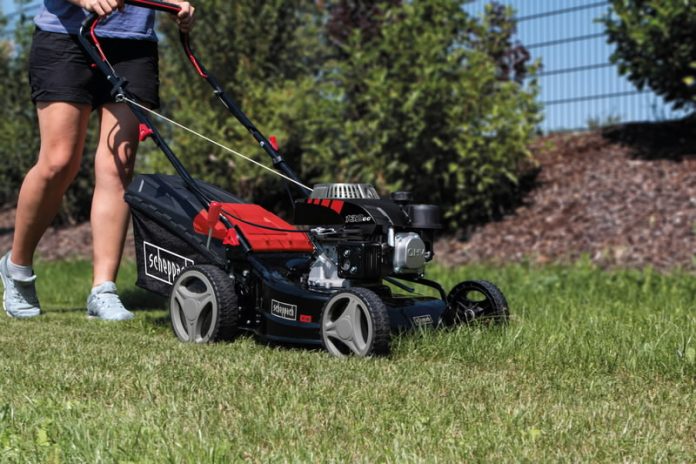What is a Lawn Mower?
A lawn mower, also known as a garden tractor, is a powerful machine designed to cut and maintain grass. It features sharp rotating blades attached to an axle with wheels, enabling efficient grass cutting and edge trimming. Originally, lawn mowers were manually pulled by tractors, but modern designs are mostly self-propelled, powered by electricity or internal combustion engines.
Key components of a lawn mower include the blade, motor, and grass catcher. Some models use plastic blades instead of metal to reduce spark risks and prevent potential fires. Today, cordless electric lawn mowers have gained popularity due to their ease of use, environmental friendliness, and reduced noise compared to traditional gasoline-powered models.
Types of Lawn Mowers
Lawn mowers come in various types based on size, power source, and design. The most common types include:
1. Cordless Electric Mower
Cordless electric mowers operate with rechargeable batteries, making them quiet and eco-friendly alternatives to gas-powered models. They are ideal for home use and small to medium lawns, offering convenience without emissions or excessive noise. Recent models boast extended battery life and enhanced cutting efficiency, although they may still be less suited for very large areas due to battery limitations.
2. Gasoline-Powered Lawn Mower
Also called push mowers, gasoline-powered lawn mowers use internal combustion engines to power rotating blades. They are capable of handling tougher grass and uneven terrain but can be noisy, emit exhaust gases, and require more maintenance. They are not ideal for extensive areas or sloped lawns due to their weight and manual operation demands.
3. Self-Propelled Lawn Mower
These mowers use a drive system powered by either an electric motor or internal combustion engine to propel themselves forward, making lawn maintenance less physically demanding. They often incorporate adjustable cutting heights and other advanced features, offering superior performance, particularly for larger or uneven yards. Although pricier, their efficiency and durability justify the investment.
How to Start a Lawn Mower?
Starting a lawn mower can sometimes be challenging. Follow these reliable steps to ensure smooth startup:
· Check for Fuel Leaks
Verify the fuel tank is filled with fresh gasoline mixed with two ounces of fuel stabilizer. Inspect the gas cap to ensure it’s secure and not faulty. Let the engine idle for about 30 seconds before attempting to start it; this can help circulate the fuel.
· Pull or Push
Pull the starter cord smoothly until you feel resistance, then release quickly if the mower starts. Alternatively, for models with push-start features, press the handlebar while pulling the starter cord or pressing the button to engage the engine.
· Remove Excess Debris
Clear any leaves, twigs, or grass clippings accumulated underneath the mower and around the air filter to ensure proper airflow. Remove the air filter cover and inspect for blockage; clean or replace the filter if necessary.
· Prime Without Gas
Read more: All You Need to Know about Ants its Types and How to Get Rid of Ants in the Garden?
If your mower still won’t start after routine maintenance, try priming without gas. Clean the carburetor with a wire brush, ensure it’s dry, then use a primer bulb to draw one ounce of gasoline and pump about ten times before starting the mower.
Which is Best: Electric Mower or Gas?
Despite advances in battery technology, gasoline mowers maintain a power advantage, especially in challenging conditions such as tall, wet, or dense grass and steep terrain. Electric mowers excel in quieter, cleaner operations and require less maintenance, making them ideal for smaller, well-maintained lawns. Choosing between the two depends on lawn size, terrain, environmental preferences, and maintenance willingness.
FAQs
The optimal starting method varies by model, so consult your owner’s manual or dealer instructions. Generally, following manufacturer recommendations and ensuring proper maintenance—including fuel level, clean air filters, and fresh spark plugs—ensures reliable startup. Be cautious with spark plugs to avoid igniting fuel fumes.
Oil change frequency depends on the mower model and usage conditions. Many modern mowers feature oil monitoring systems, but as a general rule, change the oil every 25 to 50 hours of operation or annually. Always adhere to the manufacturer’s guidelines for best results.
Air filter replacement frequency varies by model and use. Some newer mowers have indicator systems. Typically, changing the air filter every mowing season is recommended to maintain optimal performance and prevent buildup that could obstruct airflow or pose fire risks.
Blade sharpening intervals depend on usage, with recommendations ranging from every 5 to 30 hours of use. Sharpen blades using a file or a specialized sharpening tool, ensuring balanced and even edges. Regular sharpening promotes efficient cutting and healthier lawns.
Additionally, if you are interested to learn more about Mowing Wet Grass, please explore our Gardening category for comprehensive guides and expert advice.
Maintaining a lawn mower is essential not only for its longevity but also for achieving a pristine lawn. Regular cleaning, timely blade sharpening, and proper storage extend mower performance and reduce repair costs. Modern innovations in lawn mower technology, such as brushless motors and smart battery management, continue to improve user experience. Choosing the right mower type tailored to your lawn size and terrain can save time and effort, while eco-friendly electric models contribute to environmental sustainability by reducing emissions and noise pollution. Staying informed about maintenance best practices ensures safer and more effective lawn care year-round.

























